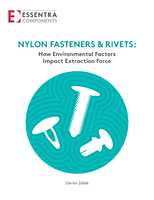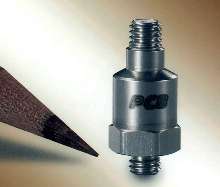
Accelerometers endure extreme thermal cycling.
Accelerometers have built-in electrical filter to prevent high frequency overload encountered in HALT/HASS/ESS testing with pneumatically actuated vibration tables. They are made of shear-structured sensing elements and hermetically sealed stainless steel housing. Units feature 10 mV/g sensitivity, frequency range to 10 kHz Ã-
Read More »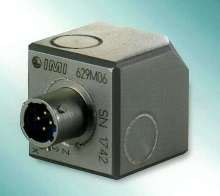
Accelerometer provides triaxial vibration measurements.
Model 629M06 1 1/8 in. cube allows portable data collection. Stainless steel housing, with 4-pin military style connector stands up to harsh industrial environments. Unit features 100 mV/g sensitivity, 48-720 k cpm frequency range, and 560 Ã-µg resolution. Max operating temperature is 250Ã-
Read More »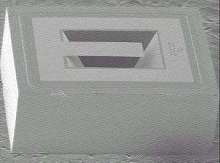
Accelerometer adapts to acceleration ranges from 1 to 500g.
Single-axis Series AS8310, with capacitive readout, senses low-g acceleration. Sensor system combines hybrid MEMS and monolithic integration and provides precise measurement of shielded capacitance (beam and counter electrode) directly on chip. Bandwith ranges between 100 Hz and 1 kHz. Sensor measures capacitance changes down to less than 0.5 atto Farad/square root Hz. Unit includes self-test...
Read More »

Whitepaper: 7 Trends for IoT in Hospitality
Check out this white paper to see how the IoT can be used in your hotel to reduce energy consumption, increase guest satisfaction, improve maintenance, and more.
Read More »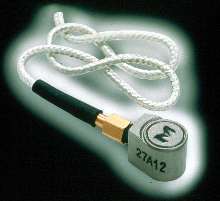
Accelerometer measures vibration on miniature structures.
Model 27A11/12, with built-in digital memory chip, stores information as Transducer Electronic Data Sheet (TEDS). Information such as sensitivity, location, and calibration coefficients can be quickly configured, minimizing human-related errors. Hermetically sealed unit includes PIEZITEÃ-® Type P-8 crystal element, operating in annular shear mode. With weight of only 1 gm, accelerometer...
Read More »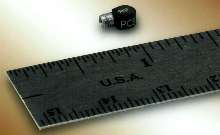
Accelerometer suits space-restricted applications.
Model 357A08 charge mode accelerometer occupies 0.11 x 0.16 x 0.27 in. and weighs only 0.006 oz for minimal mass loading of test article. It connects to charge amplifiers or in-line charge converters, which condition output signal for recording or analysis. Operating temperature is -100 to 350Ã-
Read More »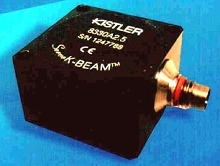
Accelerometer features 1500 mV/g sensitivity.
ServoK-BEAM 8330A2.5 Accelerometer is an analog force feed back sensor that utilizes silicon micro-machined variable capacitance sensing element. It features resolution of 0.8 Ã-µg @
Read More »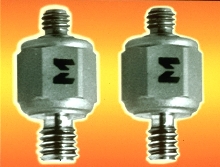
Accelerometer features integral electronics.
Model 257/257M1 ISOTRONÃ-® piezoelectric accelerometer has hermetically sealed top connector and welded housing for use in demanding environments. Featuring PIEZITEÃ-® Type P-8 crystal element operating in annular shear mode, accelerometer exhibits excellent thermal transient stability. It uses built-in low noise microelectronic amplifier to transmit its low impedance voltage output...
Read More »
Piezoelectric Accelerometer offers TEDS capabilities.
Model 66AXX miniature (5.5 g) tri-axial piezoelectric accelerometer offers integral hybrid electronics. TEDS capabilities provide digital ID communication that is IEEE P1451.4 compliant between dedicated signal conditioner and accelerometer. Accelerometer also offers annular shear sensing element, titanium package, and signal output via 4-pin receptacle. Model 66AXX is available in 66A50 (5...
Read More »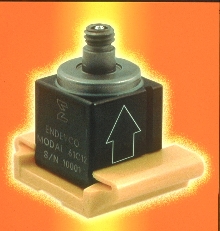
Lightweight Accelerometers withstand rough environments.
Series 61C piezoelectric accelerometers have PIEZITEÃ-® Type P-8 crystal element and integral electronics. Output of Model 61C12 is 100 mV/g and 61C13 is 1 V/g. Both can be mounted via adhesives or EZ-mount, and can be powered by any signal analyzer with 2 to 10 mA constant current supply. Signal ground is isolated from mounting surface. Both accelerometers provide IEEE P1451.4 Transducer...
Read More »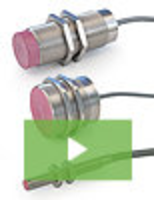
Locon Sensors Withstand Extreme Temperatures
Locon Sensor Systems offer robust sensor solutions for even the most severe environmental conditions. Their line of high-temp inductive sensors and their cylindrical photoelectric series can operate in temperatures up to 250 degrees Celsius. See our video to learn more.
Read More »



